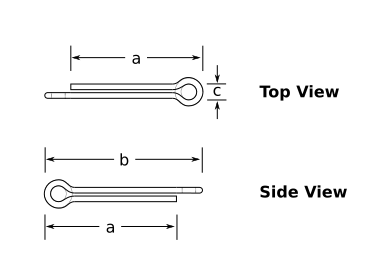Making or Buying Shanks
Flies are in general tied onto the shanks of hooks with very few exceptions. Articulated flies consists of at least two hooks tied in series allowing them to articulate. Lengthy fly materials like hair and features have a tendency to foil around the bend of the hooks. So in articulated flies, it’s common to clip off the bend of one of the hook leaving only the eye and shank with a fly tied on along with the articulated hook.
Eventually, tyers realized that clipping their hooks was more expensive than to tie their flies onto wire bent into a shank. These are simply referred to as shanks to which a hook needs to be attached. A number of shank styles and varieties exist. Most notably are Waddington shanks, Intruder shanks, and Game Changer shanks.
Waddington Shanks
The Waddington Shank was developed in the 1950’s by British angler Richard Waddington. It consists of a doubled wire with a return eye on each end. A treble hook is intended to be hinged on the rear hook eye. It allows a fly to tyer to tie a large fly and use small hook. This mimicks a long shank hooks used in long streamer flies. Articulating the shank reduces the leverage a fish can get when hooked with a long shanked hook.
Common shank sizes (a in Figure 1) are:
- 15mm
- 20mm
- 25mm
- 35mm
- 45mm
- 55mm
Below is a diagram with with measurements for making these shanks.
Total wire length ~a+b+c+e

[1] “The Waddington Shank – An ace in your hand”, http://www.fishmadman.com/newsletter/newsletter-march-2011/, accessed on Jan. 23rd, 2021.
Intruder Shanks
An intruder fly is not a specific fly pattern, instead it is a platform or a fly tying concept onto which flies are tied. The intention was to tie big flies using small hooks. They consist of a shank, trailer wire and trailer hook. Two shoulders of material are found at each end of the shank which is left generally bare. The shank described here is a basic variation that easily created by the tier. The doubled up wire near the eye provides a stable platform on which to tie a set of barbell eyes. These were popularized by in the 90’s by Ed Ward, Jerry French, Scott Howel and the OPST company.
Commonly available intruder shank lengths (a in Figure 2) are:
- 20mm
- 30mm
- 45mm
- 60mm
Total wire length ~a+b

Game Changer Shanks
Game Changer shanks are a reasonably newly developed shank or platform for making Game Changer flies. It was developed by Blane Chlockett. The Game Changer consists of creating a chain of short shanks together to create an articulated spine. The shanks are kept short and have two return eyes that lie in perpendicular planes from each other.
The lengths of shank used to create these flies depend on the intended size of the fly and tend to vary within the fly itself.
Commonly available lengths (b in Figure 3) are:
- 10mm
- 15mm
- 20mm
- 25mm
- 28mm
- 40mm
- 80mm
Total wire length ~2a+b
